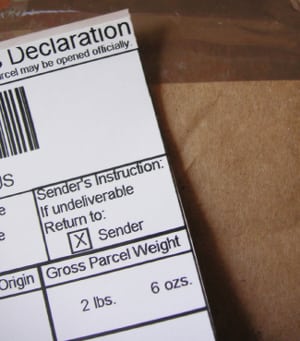 Back in March, I shared three ways to make the returns process easy for online retailers – showcase your policy, implement a Return Merchandise Authorization (RMA) system, and get tech savvy with your shipping labels.
Back in March, I shared three ways to make the returns process easy for online retailers – showcase your policy, implement a Return Merchandise Authorization (RMA) system, and get tech savvy with your shipping labels.
I’d like to revisit this topic of package returns, but from a customer perspective and bolstered with new, revealing data.
Our team at Endicia just wrapped up a survey of more than a thousand consumers to gauge their ecommerce shopping habits and attitudes, particularly as it relates to returning items purchased online. The findings we unearthed are interesting and, we feel, can benefit online retailers.
Too “Shy” To Buy
It shouldn’t come as a surprise that most Americans shop online, but what about those folks who aren’t doing it yet? What’s stopping them? According to our survey, it turns out that the majority get “gun shy” with online purchases due to a fear of the returns process.
So what can you do to capture this group of consumers? Make it simple, easy and convenient for shoppers to return their items. You can start by creating a flexible returns policy.
Expanding the timeframe for a return, or giving customers the option of a full refund or store credit, can go a long way. This will show in-store-only shoppers that your business can be trusted and values its customers’ time.
The next thing to do is to make the returns process seamless so that customers don’t feel burdened with a return.
Our survey found that 46% of shoppers have kept an online purchase they didn’t want, mainly because returning it was too inconvenient or expensive. Your job as an online seller is to eliminate these barriers and make the returns process a no-brainer.
In my previous article I mentioned the importance of providing quick turnaround return labels for customers. Taking that one step further, customers appreciate having a return shipping label already included with their package. In fact according to ComScore, 62% of shoppers want a return label right in the box.
FedEx and UPS allow you to create return labels that are not charged postage unless they are used by customers. The USPS offers this service for qualifying customers (those who have over 10,000 returns per year).
The point is you have many return shipping options to choose from. It’s just a matter of finding the right carrier and service that works for you – and for your customers.
Shipping Costs Aggravate
While we addressed the convenience factor of including return shipping labels in packages, it’s important we also say something about cost.
Our survey found that 49% percent of shoppers list shipping costs as the most aggravating part of the online returns process. So if you’re going to keep shoppers happy, it’s important to eliminate – or at the very least, minimize – the cost of returning an item.
One way to achieve this is to rely on a mix of carriers for your parcel returns. This gives you a choice of which carrier to use and when. I recommend asking yourself, “How heavy is my package?” If it’s lightweight – or if the return shipment will be lighter than the original shipment – the USPS typically offers the most affordable rates. But if your products are on the heavy side (more than 10 pounds), private carriers like FedEx and UPS may offer better options. Plus, you can always use a private carrier for the outbound shipment and include a USPS shipping label for the return.
Online shoppers desire an easier returns experience, so it’s critical for your business to keep up. Using the above advice you can tackle the returns process with confidence, giving your customers the utmost convenience at a minimum cost, while also growing your overall profit.
